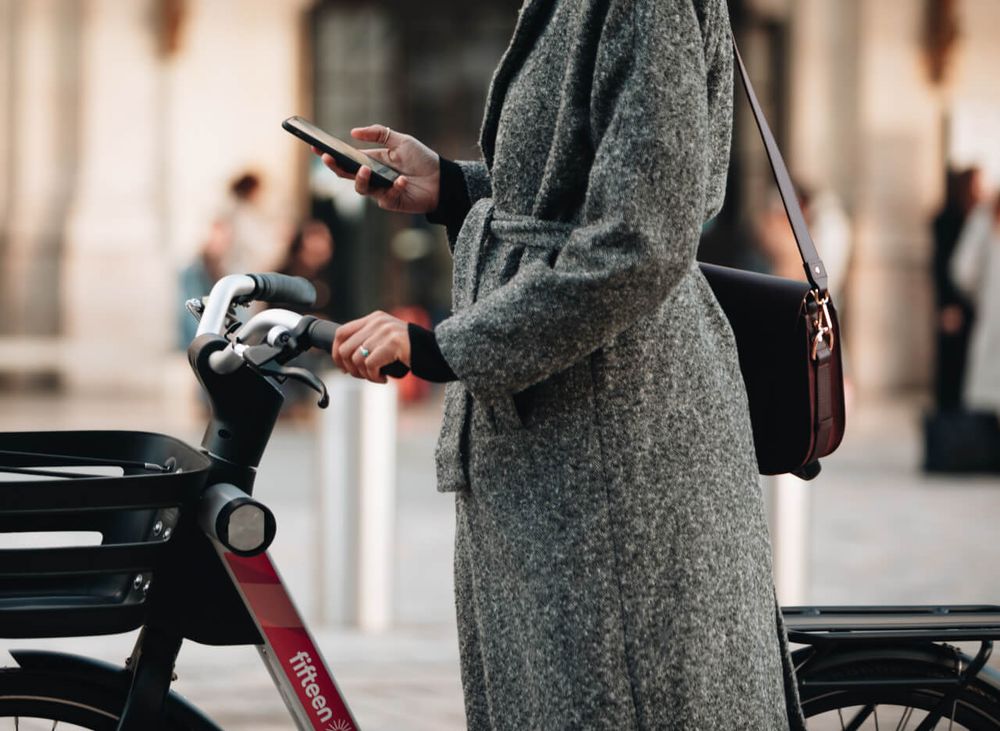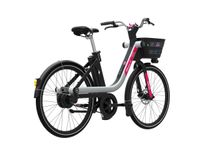So, you’ve decided you want to implement a bike-sharing scheme in your city.
One of the most challenging parts of this process is the financial side of things: capital expenditure, funding, pricing structures and payback time.
All the cities that we work with have the same beliefs: shared bikes reduce congestion, benefit the environment and improve quality of life in cities. When it comes to finances, cities have different goals.
In this article, we will see how cities can choose the perfect pricing structure to address their needs.
1. Understand the dynamics of pricing
Pay as you go (PAYG) v monthly fee
Pay-as-you-go is easy, users only pay for what they use. It’s perfect for tourists and occasional riders. However it can become expensive for people who want to use the service on a regular basis.
A monthly fee structure benefits frequent users. For you, it’s a source of guaranteed income and, once the user subscribes to the service, they will want to ‘break even’ on their investment, which usually leads to increased ridership.
What can be included in a monthly fee?
Usually with a monthly fee, users get the first part of each trip (or the first part of their first trip of the day) for free (e.g. the first 30 minutes). From then on, you can charge them per minute or per 15/30 minute intervals thereafter.
Deciding how many ‘free’ minutes per trip comes down to how you want your bike service to be used. Will it be to get people to and from work, the supermarket or other shops? If so, 30 minutes should be enough. If you also want people to use the bikes to take longer trips and to ride for leisure/see the city, perhaps 45 minutes would be more suitable.
Top Tip: You can introduce reduced fares for certain societal groups (e.g. student discounts make the scheme more accessible for young adults).
2. The implications of pricing
Pricing influences two things - service usage and the cost of running the scheme. There are two main goals:
Making it inclusive and accessible
Lower prices democratise the use of bikes across the city through a competitive (monthly) subscription. The lack of a price barrier means that service is inclusive and accessible to all citizens - because the cost is worn by the city. However, cities often offset this cost by charging higher prices for one-off trips made by occasional users who don’t pay subscriptions, such as tourists.
Minimising costs on your side
By setting high rates for both subscriptions and one-off rides, you balance the cost of each trip with the revenue from each trip. On the other hand, public use will be more limited; the scheme will certainly be less inclusive, but also less adopted as a means of transport in your city.
Finding the balance
As is the case with many things, it’s about finding the right balance. A scheme that is too cheap for users will cost the city significantly in maintenance. Conversely, prices that are too high will result in poor adoption and usage.
We recommend that cities lean towards making their sharing scheme inclusive. Although the cost is higher for the city, the social benefits of cycling are accessible to everyone, and increased usage is proven to reduce the use of cars.
It is also vital that citizens adopt the scheme early; a scheme that is instantly regarded as too expensive is not a good start. Instead, it’s worth opting for option a) to start with and, if desired, begin the transition towards option b) once ridership is stable.
Having enough resources to keep the scheme healthy is vital. If you cannot guarantee a healthy fleet of bikes, people will begin to distrust the service if they cannot find a functional bike.
3. What is the pricing structure going to be?
Bike-sharing schemes often feature very flexible pricing structures. You can usually rent a bike for a single journey or for a whole day; otherwise, you can choose to sign up for weekly, monthly or annual subscriptions.
Whatever happens, the offers must:
- Be clear: limit the number of options so that it is quick and easy to understand.
- Answer different needs: there should be options that appeal to both citizens and tourists.
Recommended structure
Here is a simple structure that we have found to be successful.
Monthly subscription (with an initial 12-month commitment)
This one’s for your citizens. A monthly subscription is standard practice these days for many industries, not just in transport. The key benefits of this offer is that the 12-month commitment allows you to forecast your revenue for 12 months. An one-off annual payment, however, might put off many would-be users. Monthly payments removes this deterrent, whilst simultaneously guaranteeing revenue for the year ahead.
The subscription can include 20 or 30 minutes per trip, with additional minutes charged at an ‘on-demand’ rate.
Pay as you go (PAYG)
The option to pay per trip makes the scheme accessible to very occasional users and tourists. You can either charge the user a small fee per minute, or you can give trips of different lengths a fixed price (e.g. €1.50 under 15 minutes, €2.50 under 30 minutes and €3.50 under 60 minutes).
This is an important consideration because it makes using the service inclusive for all of your citizens, even if they don’t want to purchase a monthly subscription.
Considerations for subscriptions
There are a few things to consider when deciding how exactly your subscription system should work.
Free minutes per journey
This is the most common system. It means that users can take a bike multiple times a day and - as long as they stay under the threshold for trip length - won’t be charged anything extra. The biggest downside to this system is that people can take advantage of it - take food delivery workers, for instance. They will be able to dock a bike and take another straight afterwards for hours on end. Whilst we agree that this is much better than taking a car or a moped, it means that there will be fewer bikes for other citizens in the evenings. This is a problem in large cities but, for smaller cities with fewer bikes, it could be even more of an issue.
Free minutes per day
This system gets around the problem. Users can take one or two free trips during the day (or for a combined number of predetermined minutes) before being charged. It is both convenient for commuters and good for keeping a high fleet availability. If someone wants to take a bike for several hours, they can do so, but will have to pay an additional fee. You can either make this as a flat rate fee for each 15 or 30 minute interval, or charge per minute.
4. And what about the actual prices?
That all depends on your objectives: making it inclusive v minimising costs.





